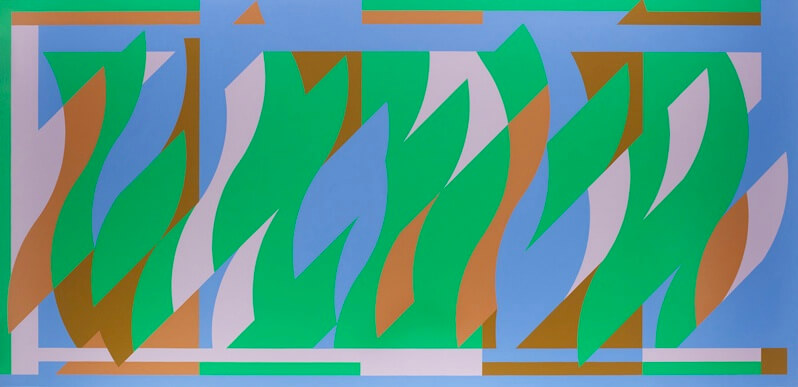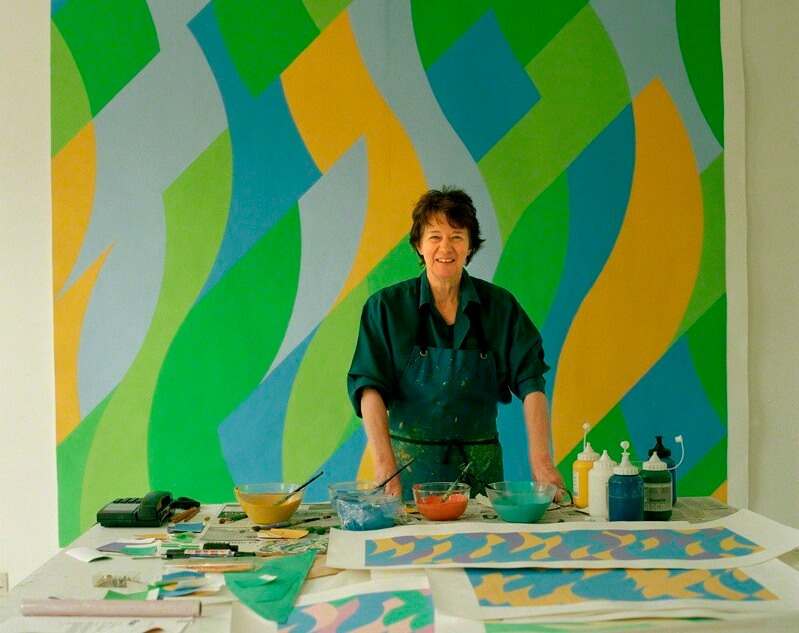In a recent interview with The Guardian’s Charlotte Higgins, painter Bridget Riley discussed “movement, shimmering, sparkling and reflecting … all those things that happen in landscape” as the inspiration for her abstract paintings. In the two videos below, Riley elaborates on the influence of landscape from an early age, and the visual power found in rhythm and repetition.
In the first video Riley narrates:
Rhythm and repetition are at the root of movement. They create a situation within which the most simple basic forms start to become visually active. By massing them and repeating them, they become more fully present. Repetition acts as a sort of amplifier for visual events which seen singly would hardly be visible. But to make these basic forms release the full visual energy within them, they have to breathe, as it were – to open and close, or to tighten up and then relax. A rhythm that’s alive has to do with changing pace and feeling how the visual speed can expand and contract – sometimes go slower and sometimes go faster. The whole thing must live.
In the second video Riley recounts the formative experience of looking at the landscape:
“I was extremely fortunate growing up to spend time in Cornwall… there was a lot to see. It was during the war, so there was very little entertainment, very little to do… we went for walks. And it being a very, very beautiful coastline, there was the sea… there were trees, the valleys, the streams… and these things were of such enormous pleasure to me that I had a head start on seeing really, because there was a lot, a lot to see. But when it came to looking, I think I really began to learn to look when I went to art school and I started to draw. Because drawing is the discipline which actually is a tool to deepen your looking, concentrate your powers of looking, and you begin to train your eyes and your visual memory… this is the agent for looking in depth.”

